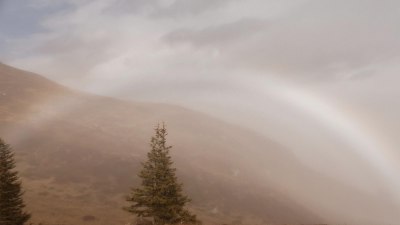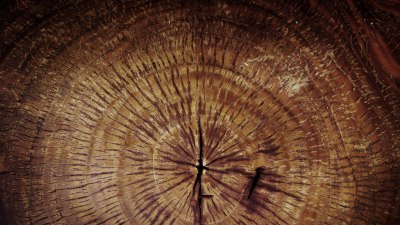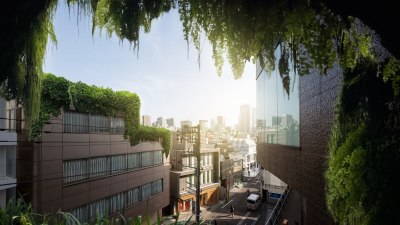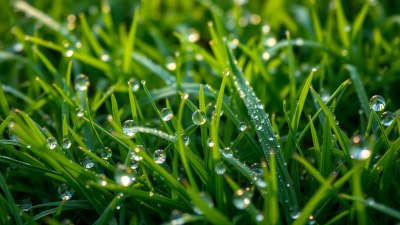What Are Ghost Rainbows and Why They Appear on Foggy Days
Explore the phenomenon of ghost rainbows, their causes, and when you're likely to see them on foggy days.

Have you ever seen a ghost rainbow? These atmospheric phenomena, also known as fogbows, create stunning visual displays that can captivate anyone who happens to be in the right place at the right time. Unlike regular rainbows that are caused by sunlight refracting through raindrops, ghost rainbows occur when light interacts with tiny water droplets suspended in fog. This article delves into the science behind ghost rainbows and explains why they are more common on foggy days.
What Exactly is a Ghost Rainbow?
Ghost rainbows are somewhat elusive compared to their more vibrant counterparts. They appear as pale arcs in the sky with colors that are less saturated. The phenomenon happens when moisture in the atmosphere—specifically, tiny water droplets that comprise fog—refracts sunlight. The result is an ethereal band of light that can lighter or more muted than traditional rainbows. You might also hear fogbows referred to as 'white rainbows' because of their faint coloration.
The Science Behind Ghost Rainbows
The creation of ghost rainbows involves several physical processes, primarily refraction, reflection, and diffraction. When light passes through a droplet of water, it bends or refracts due to a change in medium—from air to water. This bending of light separates it into its different colors, showcasing the spectrum visible as a rainbow. However, in the case of ghost rainbows, the droplets are much smaller than those that form typical rainbows. This is crucial because smaller droplets scatter light differently.
Why Ghost Rainbows Are Less Vibrant
Regular rainbows are formed by larger raindrops, which allow for more distinct color separation and saturation. In contrast, the smaller droplets found in fog create a phenomenon where the colors are blended together, resulting in pastel hues rather than vibrant reds, greens, and blues. Additionally, the lack of sunlight intensity in foggy conditions contributes to the muted appearance of ghost rainbows. This more subdued palette can provide a serene and almost otherworldly sight.
Conditions Necessary for Ghost Rainbows
To observe a ghost rainbow, certain conditions must be met. These conditions primarily involve the presence of fog, sunlight, and the right angle of observation. Foggy days are ideal because the tiny water droplets in fog create the perfect medium for light refraction. You need a source of sunlight, typically peeking through breaks in the clouds or shining directly through the fog. Observing from a location where the sun is behind you will yield the best results.
When and Where to See Ghost Rainbows
Ghost rainbows are not limited to specific geographic locations, but they are most frequently seen in areas where fog is common, particularly in coastal regions, valleys, and near large bodies of water. Early mornings or late afternoons are often the best times, particularly just after a rain or in the early stages of a fog. Some of the world’s most fog-prone areas include San Francisco, Newfoundland, and the British Isles. However, any foggy location with sunlight can potentially produce a ghost rainbow.
The Role of Temperature and Humidity
The atmospheric conditions play a significant role in ghost rainbow formation. The temperature of the air, humidity levels, and the size of the fog droplets can affect how visible and vibrant a ghost rainbow will be. Generally speaking, warmer temperatures with high humidity levels can increase the likelihood of observing one of these phenomena. It's also important to note that the thickness of fog can enhance visibility, making ghost rainbows more pronounced. Light scattering in denser fog creates a more striking contrast between the rainbow and its surroundings.
Unique Variations
Sometimes, ghost rainbows can appear with additional features, such as halos or glories. A halo is a ring of light that encircles the sun or moon, while glories are colorful rings that appear around the shadow of an observer. These phenomena occur under similar conditions, where light disperses through tiny water droplets. Any additional moisture or ice in the atmosphere can enhance sighting potential, making foggy days a thrilling time for those eager to spot these ephemeral wonders.
How to Capture Ghost Rainbows on Camera
Capturing the beauty of ghost rainbows can be challenging due to their delicate appearance and the conditions under which they occur. Here are some tips for capturing these spectral arcs. First, ensure that you have a good camera with manual settings capability, as automatic settings may not accurately reflect the subtleties of color and light. Adjust your aperture and ISO settings to take advantage of low-light conditions and capture the soft glow of the rainbow. If possible, use a tripod to stabilize your camera during long exposure times, and experiment with different angles and perspectives to achieve the best shot.
Viewer Experience and Cultural Significance
Viewing a ghost rainbow can be a magical experience. Many people express feelings of awe and a sense of connection to nature when witnessing this phenomenon. From a cultural standpoint, many indigenous cultures have attributed various meanings to rainbows, including them as symbols of peace, hope, and transition. Ghost rainbows, with their ethereal quality, can evoke a similar sense of interpretation—reminding viewers of the delicate relationship between nature and the human experience.
Ghost Rainbows in Art and Literature
Throughout history, ghost rainbows and other atmospheric phenomena have inspired countless works of art and literature. Artists often depict these transient moments in nature, capturing their beauty in paintings, poetry, and prose. The soft, muted colors of ghost rainbows lend themselves well to artistic interpretations that explore themes of fragility and fleeting beauty. Many authors incorporate these magical occurrences into their narratives to enhance the atmosphere or symbolize change within their stories.
Ghost rainbows remain a fascinating and beautiful natural occurrence that speak to the complexity and wonder of our atmosphere. While they may not happen as frequently as their bright, colorful counterparts, they offer a unique perspective on the interaction of light and moisture in our environment. The next time you find yourself on a foggy day, take a moment to look up—you might just catch a glimpse of a ghost rainbow gracing the sky, reminding you of nature’s quiet but profound beauty.











